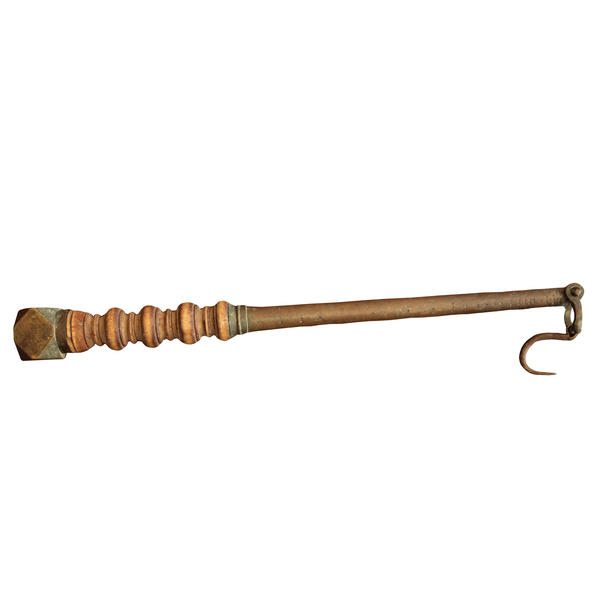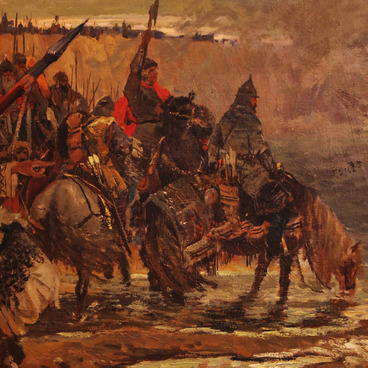Handicraft manufacturing of steelyards in Kaluga began at the end of the 18th century. One of the oldest devices found by historians dates from the ‘18th day’ of February 1797: such was the manufacturing date stamped on the item itself. By the middle of the 19th century, the production of Kaluga steelyards reached an industrial scale – and they were sold not only in the city itself, but in many other Russian as well. Researchers found steelyards from Kaluga in the Tver, Yaroslavl and Novgorod Governorates, in Moscow and even in the capital of Tsarist Russia – St. Petersburg.
The steelyard consisted of three main parts: an arm, suspensions (weights) and a lever (hook). In bronze devices the hooks for suspending loads were often made of iron for greater strength. As a rule, steelyards were not decorated, but sometimes, for these purposes, masters embossed circles with a dot in the centre on the planes. And on counterweights they marked, as a rule, the place of manufacture – Kaluga, the year, month and day of production, and even the initials of the master – and sometimes of the customer as well.
However, there were masters who paid attention not only to the functionality of steelyards, but also to their appearance. For example, the steelyards of the 1820-1830s marked by the initials ‘A.M.’, were often decorated with images of deer, birds, double-headed eagles. Such decor was characteristic of products by the Kaluga master Andrey Makarov.
The greater part of the 19th-century domestic steelyards was of metal with wood, but in Kaluga they also produced a rarer and more skilful type – the all-metal. Its design repeated the one with metal and wood, but consisted entirely of metal parts.
At the end of the 19th century, metal-wood steelyards almost completely went out of production and everyday life. This was a necessary measure: dealers in various articles were laid under an obligation to use more accurate devices of the ‘Polish type’. In such steelyards, the pivots and load attachment point were constant relative to each other, and the lever with a fixed counterweight moved relative to the pivot and the attachment point. The scale of steelyards of this type was uniform, which minimized measurement errors.
The steelyard consisted of three main parts: an arm, suspensions (weights) and a lever (hook). In bronze devices the hooks for suspending loads were often made of iron for greater strength. As a rule, steelyards were not decorated, but sometimes, for these purposes, masters embossed circles with a dot in the centre on the planes. And on counterweights they marked, as a rule, the place of manufacture – Kaluga, the year, month and day of production, and even the initials of the master – and sometimes of the customer as well.
However, there were masters who paid attention not only to the functionality of steelyards, but also to their appearance. For example, the steelyards of the 1820-1830s marked by the initials ‘A.M.’, were often decorated with images of deer, birds, double-headed eagles. Such decor was characteristic of products by the Kaluga master Andrey Makarov.
The greater part of the 19th-century domestic steelyards was of metal with wood, but in Kaluga they also produced a rarer and more skilful type – the all-metal. Its design repeated the one with metal and wood, but consisted entirely of metal parts.
At the end of the 19th century, metal-wood steelyards almost completely went out of production and everyday life. This was a necessary measure: dealers in various articles were laid under an obligation to use more accurate devices of the ‘Polish type’. In such steelyards, the pivots and load attachment point were constant relative to each other, and the lever with a fixed counterweight moved relative to the pivot and the attachment point. The scale of steelyards of this type was uniform, which minimized measurement errors.



